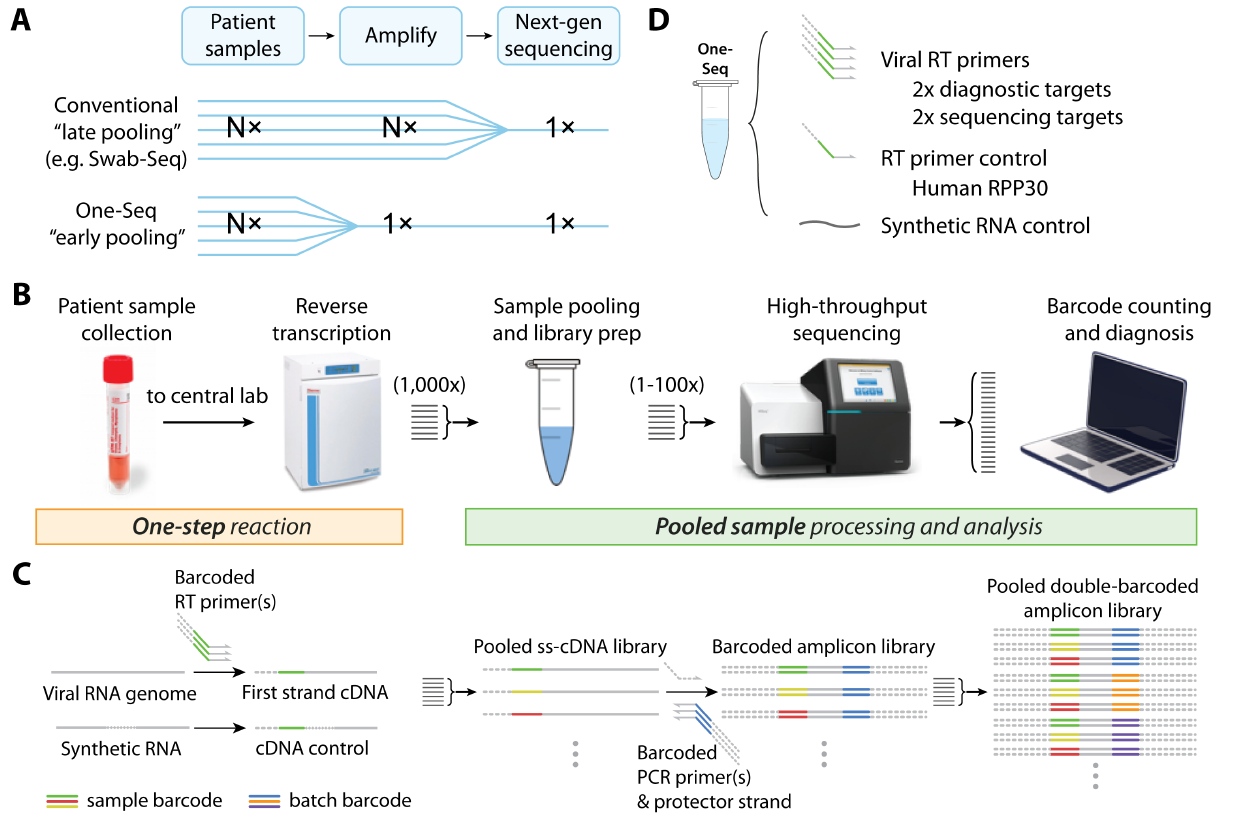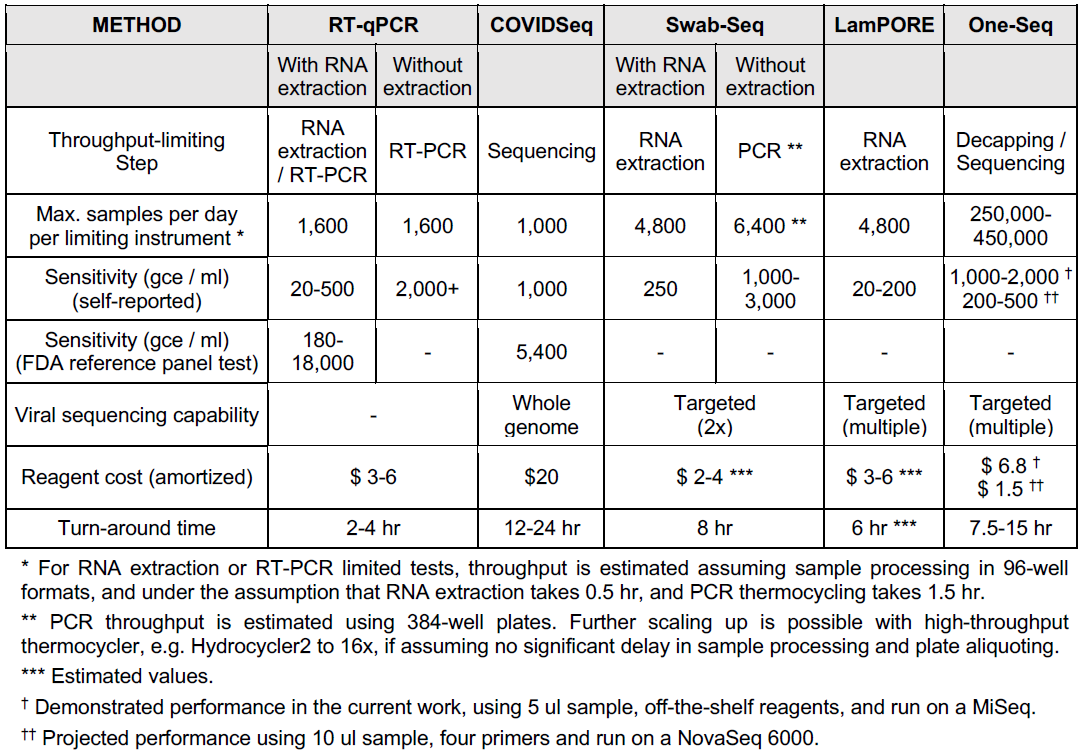2021-04-21 By Quick Biology
NGS-based SARS-CoV-2 virus detection not only eliminates bottlenecks in scalability but also identifies viral variants, which plays a big role in current SARS-CoV2 VOC (Variants of concerns) surveillance. Previously, Quick Biology reported several scientists’ works, that followed traditional barcoding and sequencing workflows, and required individual RNA extraction and PCR thermocycling steps. In recent medRxiv, researchers from Harvard Medical School reported a new method “One-Seq”, that eliminates the current bottlenecks in scalability by enabling early pooling of samples, before any extraction or amplification steps. In this work, they solved two critical challenges. Firstly, they optimized viral lysis, screened different RNase inhibitors, RNA reverse transcriptase which not only preserves patient samples at room temperature for up to 24 hrs during sample collection and transport to the central lab but also allows highly efficient reverse transcription for viral detection. Secondly, by performing pooling before amplification, they designed “protector” oligos, which stringently avoid any leftover barcode (patient information) RT primer crosstalk causing false-positive diagnoses (see the workflow in figure1, ref1). One-Seq significantly simplifies traditional NGS diagnostics workflow and keeps high sensitivity at LoD (limit of detection) down to 2.5 genome copy equivalent (Table 1).
Figure 1: Principle and workflow of One-seq for highly scalable viral detection and variant identification. (A) Illustration of One-Seq “early pooling” strategy in comparison with conventional “late pooling” methods. (B) Clinical workflow of One-Seq. Early pooling allows up to 100,000 patient samples to be pooled and analyzed together. (C) Molecular workflow of One-Seq. One-Seq uses upfront sample barcoding and a “protector” strategy to enable early sample pooling and uses a two-stage pooling strategy to support highly scalable testing. (D) Illustration of One-Seq reaction components. One-Seq uses multiple RT primers for viral diagnostic and sequencing, one human gene RT primer, and one synthetic RNA as positive controls. (ref1)

Table 1: Performance comparison between One-seq and other methods

Quick Biology can assist you with any viral NGS-based projects. Find More at Quick Biology.
See resource:
1. One-seq: A Highly Scalable Sequencing-Based Diagnostic for SARS-CoV-2 and Other Single-Stranded Viruses. 2021 (https://www.medrxiv.org/content/10.1101/2021.04.12.21253357v1)



